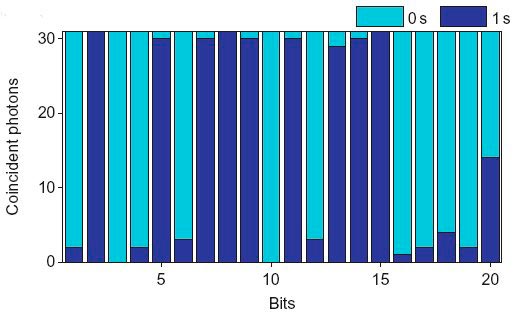
The hydrogen molecule may be the simplest of all two-atom systems, but chemists have had to work very hard to calculate its properties from first principles using quantum mechanics. Now, however, a team of physicists and chemists in the US and Australia has for the first time calculated the molecule’s energy levels using a primitive quantum computer that consisted of a pair of entangled photons.
Quantum computers are very different from classical computers, which store and process information as bits that can have one of two states – “0” or “1”. A quantum computer, in contrast, exploits the ability of quantum particles to be in a “superposition” of two or more states at the same time. These quantum bits – or qubits – can also be entangled, whereby a measurement of one qubit instantly reveals the state of the other.
Although physicists have struggled to create even the simplest quantum computers, such devices could, in principle, outperform classical computer on some tasks. Quantum chemistry is one field that could benefit from quantum computers because calculations involving molecules tend to require computing resources that increase exponentially with the number of atoms involved.
Bonding and anti-bonding states
The new work has been carried out by Alán Aspuru-Guzik and colleagues at Harvard University’s Department of Chemistry, working with Andrew White and his team at the University of Queensland. Each of the two entangled photons in their computer is a qubit, in which “0” and “1” correspond to the horizontal and vertical photon polarization states respectively. One of the entangled photons represents the hydrogen molecule. This photon’s two states correspond to the molecule’s bonding and anti-bonding states. The other photon represents a bit of the binary number corresponding to the total energy of the molecule.
The researchers calculated the energy of the molecule using what is known as an iterative phase estimation algorithm (or IPEA). An iteration begins with a pair of entangled photons being created by shining light at a non-linear crystal through the process of “spontaneous parametric down-conversion”. The photon representing the molecule is then passed through a series of optical components that simulate the interactions between nuclei and electrons that define the energy (or Hamiltonian) of the hydrogen molecule. The result is a change in the quantum state of the qubit – and this time evolution (or phase shift) is related to the energy of the molecule.
The phase shift is determined by recombining the entangled photons in a beam splitter and then measuring the value of the photon that represents the energy bit. Because this process is prone to the occasional error, it is repeated about 30 times to decide whether the polarization is more likely to be “0” or “1”.
This value is one bit of the binary number that defines the energy of the molecule. The bit is then fed back into the optical system, which is adjusted before the process is repeated to give the second bit of the energy value – and so on.
20-bit binary number
The process is done 20 times to create a 20-bit binary number that represents the energy of the hydrogen molecule to a precision of about one part per million. This energy is for a fixed inter-atomic separation, so the calculation must be repeated for a number of different separations to find the minimum energy state.
Using the technique, the team obtained an energy-versus-separation curve that agrees exactly with that obtained by a classical computer. This was done for the lowest energy state of the molecule as well as three higher energy states.
The result was, however, obtained with some help from a classical computer, which was used to work out the initial quantum state of the molecule (prior to applying IPEA) and also in some parts of the iteration itself. Performing these functions on a quantum computer will be a major challenge, according to the researchers.
Baby step
Aspuru-Guzik described the two-qubit calculation as a “baby step forward,” and added that a 128-qubit system would be needed to work out the energy levels of a simple molecule such as water. He told physicsworld.com that his group is planning to work with the Australians as they create successively larger quantum devices. He also said that he is looking for research partners who could implement the calculation in quantum computers based on trapped ions and/or superconducting quantum bits.
Jeremy O’Brien at the University of Bristol in the UK described the calculation as “an extremely exciting application of quantum computing”. Regarding the use of a classical computer, O’Brien explained that physicists “can’t leap forward and do everything at once”.
The work is described in Nature Chemistry.



